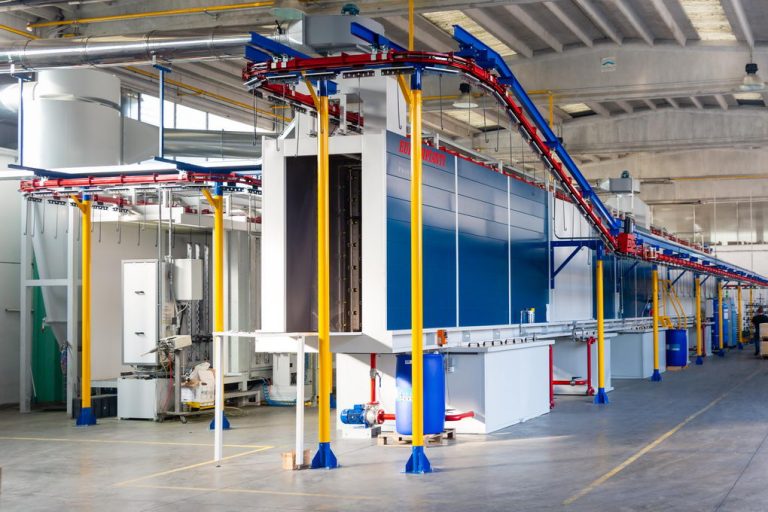A flawless finish doesn’t start with powder—it starts with the prep. Surface preparation is the silent MVP behind any consistent, high-quality result on a powder coating machine. Whether you’re running a small batch or full-scale production, these surface prep routines directly impact efficiency, durability, and the professional look of your end product.
Alkaline Wash Protocols to Boost Coating Adhesion
Alkaline washing is one of the first steps in achieving a strong bond between the surface and the coating. This process uses a water-based solution with high pH to strip away oils, greases, and organic contaminants that are invisible to the eye but cling stubbornly to the material. By breaking down these residues, alkaline washes expose a clean base for the powder to stick to, which significantly improves adhesion and reduces coating failures like peeling or bubbling.
For operations using a powder coating machine, sticking to the correct temperature, dwell time, and rinse sequence with alkaline wash is essential. Skipping or rushing this step often results in uneven coating or inconsistent color finish. Automated systems help maintain consistency, but manual processes must be carefully monitored to prevent under-cleaning or leaving chemical residues that might interfere with later steps.
Steam Cleaning Steps for Optimal Contaminant Removal
Steam cleaning brings a powerful edge to surface prep by blasting away microscopic dirt particles and residues using high-temperature vapor. Unlike traditional rinsing, steam can reach into seams, corners, and tight weld joints—places that brushes and water sprays can miss. It’s especially effective on metals that have been exposed to road grime, cutting oils, or shop dust during fabrication.
In facilities where a powder coating machine is used for precision work, steam cleaning acts as a safeguard against hidden contaminants that could disrupt adhesion. The heat from the steam also helps dry the surface quickly, reducing wait time before moving to the next prep step. This makes steam cleaning an efficient option, particularly for operations focused on quick turnaround without sacrificing quality.
Uniform Surface Conditioning to Prevent Coating Defects
Surface conditioning involves mechanically altering the texture of the workpiece to create a consistent profile. This may include sanding, abrasive blasting, or chemical etching, depending on the material. The goal is to eliminate imperfections such as scale, mill residue, or weld spatter that can cause coating inconsistencies. A uniform texture gives the powder particles something to grip, improving flow and finish uniformity.
On a powder coating machine, even minor surface variations can lead to poor electrostatic attraction, uneven thickness, or visual flaws like orange peel. By carefully conditioning each piece before it reaches the spray area, operators can reduce touch-ups, rejects, and do-overs. This not only speeds up workflow but also makes material use more efficient.
Solvent Wiping Procedures Ensuring Surface Purity
Solvent wiping is a manual technique that complements other cleaning steps by targeting residual contamination. After machining or handling, parts often accumulate light oils, fingerprints, or airborne particles that can resist alkaline wash or steam. Using lint-free cloths and approved solvents—like isopropyl alcohol or acetone—removes these last traces and ensures the surface is as pure as possible.
For anyone running a powder coating machine, this step becomes especially important just before coating application. If contaminants are still present, they can cause bubbling, fish eyes, or premature coating failure. Care should be taken to use fresh cloths and avoid cross-contamination between parts. It’s a small, labor-intensive step, but one that pays big dividends in product quality.
Rust-Inhibitor Application for Extended Coating Durability
Uncoated metal surfaces, particularly steel, can start to oxidize quickly—even in a matter of hours. Applying a rust-inhibitor before coating helps preserve surface integrity between cleaning and finishing. These inhibitors form a temporary barrier that slows down corrosion but is compatible with powder coatings, meaning they won’t interfere with adhesion or cure quality.
Latest information: Crazzy Hackers
This process is particularly helpful in humid environments or in facilities where coated parts may not immediately move from prep to finishing. Rust inhibitors ensure that even with a slight delay, the substrate remains in optimal condition for coating. When used alongside a high-performance powder coating machine, this preventative step extends the life and strength of the finish.
Detailed Surface Profiling to Enhance Bond Strength
Surface profiling focuses on measuring and optimizing the surface roughness before coating. This is more advanced than simple cleaning or abrasion—it’s about targeting a specific profile depth that allows the powder to embed and anchor properly. Tools like profilometers can measure micro-roughness to ensure consistency across batches.
Profiling is especially important for parts that demand high adhesion strength, such as components used in structural or automotive applications. By pairing detailed profiling with a precision powder coating machine, manufacturers can deliver finishes that not only look great but also perform under mechanical stress, vibration, and exposure to the elements.
Ionized Air Blow-Off Techniques to Eliminate Static Contamination
Static buildup attracts dust, lint, and other airborne contaminants that can settle on surfaces seconds before coating. Ionized air blow-off systems neutralize these static charges, making it easier to clean and maintain a particle-free surface. These systems use compressed air charged with ions to break the bond between the surface and any clinging particles.
In a powder coating environment, static contamination can ruin a finish even after all other prep steps were performed correctly. A final ionized air sweep just before coating ensures no dust remains to interfere with the application or curing process. It’s a quick step, but one that locks in the results of every other prep effort made before the powder hits the part.

